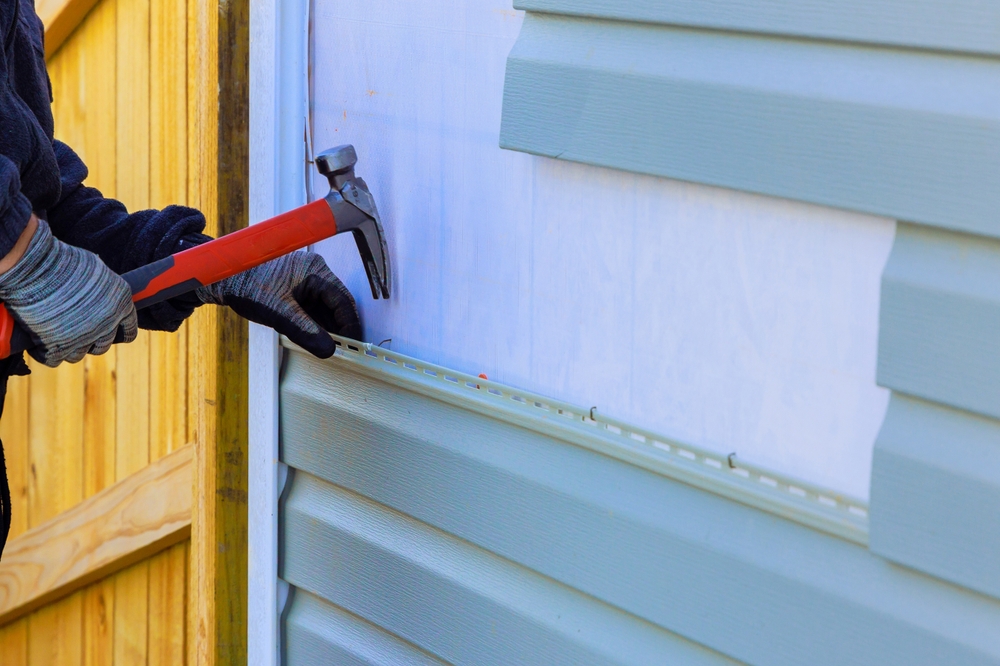There are a few common misconceptions out there surrounding metal roofs and metal roofing products, and lightning risks are a great example. While many people mistakenly believe that having a metal roof puts your structure and its occupants at greater risk of a lightning strike, this simply isn’t true – and in fact, the right metal roof setup will actually decrease lightning risks compared to other roofing materials.
At Mid Michigan Metal Sales, we’re here to offer high-quality metal roofing panels, metal roofing shingles and other metal roofing products for clients around the great state of Michigan. Here are some basics on how metal roofs work, how they are constructed to avoid any risks of conductivity or lightning issues, and how they can actually help decrease the risks in any situation where lightning does strike.
No Roofing Material Makes Lightning Strikes More or Less Likely
Because metal is known to be conductive for electricity, many people mistakenly believe that when it’s the primary material for a roof, that this roof is more likely to be struck by lightning. In reality, all roofs are equally likely to be struck by lightning – no roofing material makes it more or less likely that a structure will be hit, because the cause of lightning strikes is atmospheric conditions rather than any property of the roof itself.
This is a common misconception, but it’s important to be aware of the facts: no roofing material puts a structure at greater or lesser risk for lightning strikes. What really matters is how a given material will handle the energy of a strike, and how it helps protect occupants if a lightning strike does occur.
Factors That Do Influence Lightning Strike Likelihood
Now, while metal roofs or any other roofing material typically do not impact the probability of a lightning strike, there are several factors that do. They include:
- Topography of the area: Higher elevations tend to be more prone to lightning strikes because they are closer to the clouds. If your structure is on a high elevation, it may be more likely to be hit by lightning.
- Weather conditions: Thunderstorms and other severe weather patterns can increase the likelihood of a strike in your area.
- Building height: Taller structures are more likely to be hit by lightning than shorter ones, because they are closer to the clouds.
- Building size: If there is greater surface area that a lightning strike can be attracted to, the chances of a strike increase.
However, it’s good to remember that no matter where you are, how large or tall your building is, or any other factor: Lightning strikes are not especially common. While it’s good to be prepared, you shouldn’t be overly concerned about the risks of a lightning strike.
Approaches to Ensure Lightning Safety With Metal Roofs
Now, while everything we’ve gone over to this point about metal roofs not attracting lightning is true, that doesn’t mean metal roofs don’t need to be constructed and configured differently than other roofing materials – they do. Metal roofs are not only conductive, but also reflective, so it’s important that the right steps are taken to make sure they protect against any risks that may happen in the unlikely event that a lightning strike does take place.
Here are some of the strategies used:
- Grounding: All metal roofs need to be grounded, which means that any lightning strikes will be safely conducted into the ground away from your structure and its occupants.
- Bonding: This ensures that different segments of the roof don’t attract lightning in a dangerous way – instead they are bonded together so electricity doesn’t build up in one spot and cause harm.
- Seam sealing: Seam sealing helps to ensure that any joints or gaps don’t become weak points that allow electricity to leak, so the roof remains stable and secure even in an electrical storm.
All of these steps are important for any metal roof setup – and when done properly, they can actually increase lightning protection compared to other materials such as shingles.
Metal Roofs and Lightning Rods
Another strategy that can help enhance lightning protection for metal roofs is the use of lightning rods. Lightning rods are a great way to dissipate any electrical charges in the air, and they’re especially effective when combined with other lightning prevention steps such as grounding and bonding.
When lighting rods are installed on a structure with a metal roof, they work together to direct any electricity safely into the ground, preventing any potential damage to the structure. This makes them a great addition to any metal roof setup – and while they don’t prevent lightning strikes, they can help ensure that no harm comes from them.
At Mid Michigan Metal Sales, we’re here to provide high-quality metal roofs and other roofing products for clients around Michigan. Contact us today to learn more about what we have to offer!



